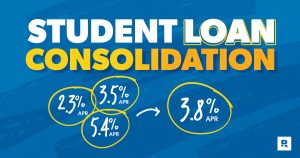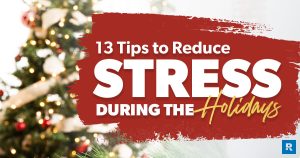Key takeaways
- There are several ways to pay off debt, including working with a reputable debt relief company.
- You can budget for debt by making it a priority in your “needs” category of expenses within your monthly budget.
- The debt snowball and avalanche methods are two payoff strategies to consider when paying off your debt.
- Additional options for managing your debt include consolidation, refinancing, and credit repair.
Paying off debt can be a daunting and overwhelming task. Thankfully, there are helpful tools you can wield in your mission to gain control of your finances.
Two important actions are following a budget and creating a debt management plan.
When you add debt repayment to your budget, you prioritize paying down the debt by adding it to your monthly budget. In the same way you pay your mortgage, phone bill and other fixed expenses, you should pay your debt payments on time each month.
In addition to budgeting for your debt, there are debt payment strategies to help you pay the debt off. These and other debt payment tools, including working with a debt relief company, especially when used together, will help you manage your debt and get your finances on track.
Budgeting for debt
When budgeting for debt, remember that your goal is to pay off your debt as quickly as possible to avoid paying even more in interest. To do this, you should know exactly what you owe, to whom, and how much you can pay towards those debts each month. You’ll also need to categorize your spending into needs and wants. Debt payments will be included in the needs category.
Your needs will also include your rent or mortgage, groceries, gas and electricity, car — including car payments, gas, and maintenance — and health expenses. Your wants category might include eating out, activities and hobbies like gardening or intramural sports.
After outlining your wants and needs, compare that amount to your monthly income. Even if your monthly income covers all your needs and wants, you should prioritize your debt by cutting costs where you can and putting those savings toward your debt payment.
Don’t be afraid to get creative when it comes to finding more money to put towards your debt:
- How can you save money at the grocery store to bring down your monthly food expenses?
- Can you switch cell phone providers to save money each month?
- What streaming services can you cancel to save money?
All of these seemingly small changes will add up quickly.
Paying more than the minimum amount required on your credit card and lowering your current expenses is a great way to budget for debt. These are just a couple of examples of how to gain control of your debt.
Additional tools include debt calculators and debt payment strategies beyond creating more money in your budget.
Debt payment strategies
Two popular debt payment strategies are the snowball method and the avalanche method. Each has its advantages and disadvantages.
To help you decide which strategy is right for you and your goals, check out our debt payment calculator.
The debt snowball method
When paying your debt with the snowball method, you prioritize the smallest amount first.
For example, if you have three credit cards with balances of $3,000, $6,000 and $8,000, you would pay off the card with the $3,000 balance first. You would continue to make the minimum payments on the other debts.
Once you’ve paid the lowest balance to zero, you would take the amount you were paying toward the lowest balance onto the next lowest balance. For the case above, that means you would take whatever payments you made to the $3,000 debt — say $400 a month — and pay that toward the $6,000 debt. These payments would be in addition to the minimum payments you already make to this credit card balance.
By following the debt snowball method, you feel the relief of paying off individual credit cards or loans faster than if you start with the largest balance first.
The debt avalanche method
The opposite of the debt snowball method is the debt avalanche method. In this debt payment strategy, you save money on interest by paying down the largest balance first.
In the example above of the three credit cards with balances of $3,000, $6,000 and $8,000, with the debt avalanche method, you would first pay back the $8,000 balance. The minimum payments would still be made on the remaining debts. Once that debt is paid, you would use the same strategy to pay off the second-highest balance by putting the money you were spending on the largest balance onto the next credit card, as well as the minimum amount that you were paying.
By utilizing the debt avalanche method, you build momentum — like an avalanche. This method is best for those who are patient and motivated by spending less in interest over time.
Debt management strategies
Beyond budgeting for debt and the various debt payment strategies, there are other methods for managing your debt.
You could create your own debt management plan by contacting your creditors and agreeing to a payment plan to pay your balances off. Doing it yourself may require a lot of effort to remain on task, especially if you have a lot of debt or several creditors.
Alternatively, you could work with a debt relief company like National Debt Relief to manage your debt.
Debt relief companies can work out the details of your payment plan with your creditors. They can also offer debt settlement services, which may include negotiating to lower the amount owed to your creditors. You could be debt-free within 24 to 48 months. However, debt settlement will require you to stop making payments to your creditors while the debt relief company negotiates your settled amount. Missing and late payments can negatively affect your credit score.
Are budgeting and debt management right for you?
Consider your situation and goals to decide if budgeting and debt repayment are right for you.
If your income is enough to pay off your debts within a timeframe you’re comfortable with and you can make short-term sacrifices to become debt-free, budgeting and managing your debt yourself is a good option.
But if you’re struggling to make minimum payments or would like to dig yourself out from under the weight of your debt sooner rather than later, you may want to enlist the help of a professional.
No matter which method you choose to manage your debt, you’ll be required to make some form of payment to your creditors.
Outside of budgeting, debt management and debt payment strategies, there are a few other useful debt paydown tools you should know about.
In some cases, like student loan debt, you can refinance your loan for a lower interest rate. You can reduce the overall amount you’ll pay when you reduce your interest rate. Additionally, you can consolidate your debt into one smaller payment with a lower interest rate to save money over time.
If you have a payoff budget and timeline, you can contact your creditors and get yourself on a payment plan. This is also a great time to ask for a reduction in your interest rate.
Finally, you’ll want to keep your credit score and report in mind while paying down your debt. Factors that affect your score the most are your debt-to-credit ratio, on-time payments and length of credit. For this reason, it’s important to make your payments on time as often as possible and keep your utilization rate under 30% of your total credit whenever possible.
Credit repair companies can be useful in helping you get your credit score back up after debt.
Next steps
Many strategies for paying off your debt include budgeting, debt management, debt payoff strategies, debt settlement and more.
Before deciding which route is best for your situation, do your homework and conduct more independent research, including consulting a debt relief company like National Debt Relief. Check out our Whole Human finance hub and learn more about the Debt Toolbox.
Read the full article here












